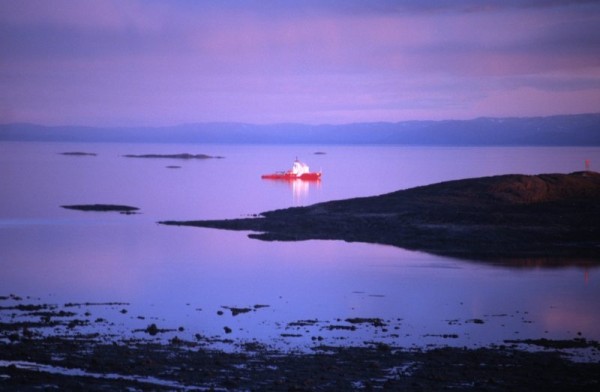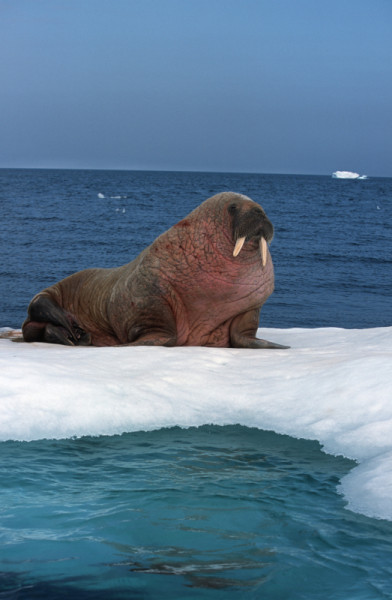Students on Ice: Thinking about the future…and walrus
Today is our last full day on the ship, and while some are a touch sea-sick from the swells, all—I think—are a touch heart-sick facing the idea of good-bye. As I write, we’re entering the mouth of Frobisher Bay. We’ll spend the day and night making our way slowly toward Iqaluit, where this trip ends. Or does it? During the past couple weeks we have truly lived in every moment. When you spend your days in the midst of mind-blowing landscape, in passionate conversation, in scanning icy seas for the spouts of whales – how else can it be? But today we’re all thinking about what comes next.
Coast Guard ship in Frobisher Bay, Baffin Island, Nunavut, Canada
This afternoon’s panel discussion focused on the future of the Arctic. It was perhaps our most challenging—intellectually and emotionally—so far. We heard voices from government, from the mining sector, from the community level. There are layers upon layers of considerations, of concerns — that diverge and overlap in complicated ways. But everything seemed to tug back to a central conundrum. Not about whether development would come to the North (it already has and it certainly will continue in one form or another). But rather at what pace. What are the underlying conditions that would make major projects, for example the Mary River Mine, successful—not simply from an economic standpoint, but from a human one? What needs to be done first? What can be done in concert? It is something of a chicken-and-egg dilemma. Is building community capacity and infrastructure a pre-requisite to getting development right, or do we need the economic injection of big projects first, to get that capacity in place?
A walrus (Odobenus rosmarus) rests on sea ice in Arctic waters
And what about the environmental considerations? “Conservation first” is a long-standing motto of my organization. But is it possible that it takes the pressure and the opportunity of major development projects to catalyze and speed up the important research, planning, and management conversations that so often languish in bureaucracy? How can community leaders, scientists and corporations partner to invent new models of development, with multiple bottom lines for people and for the land and species they depend on? That’s the question I’m left with. But I think, I really do think, it is possible.
And that’s where I’ll end this thought, because as I sit here, there are walrus lolling on the ice outside these windows. Time to pull back into the present. The future can wait, but not for long.



